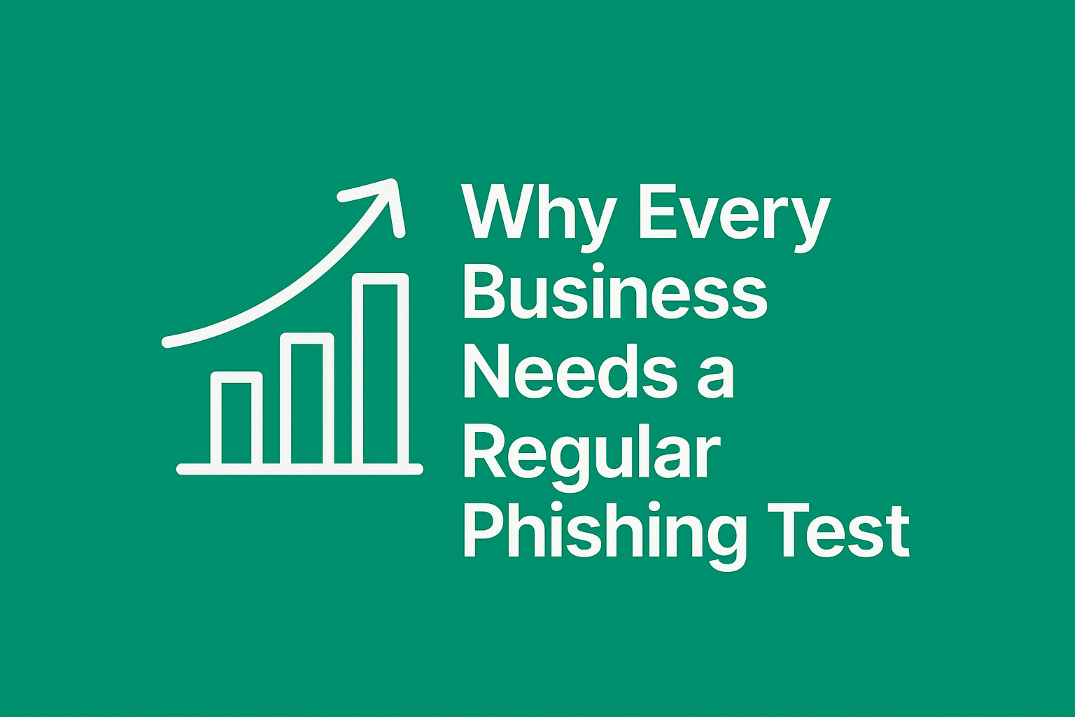As cyber attacks become more automated and sophisticated, one of the simplest and most effective defences a business can deploy is a phishing test. Despite continued investment in tools and infrastructure, most successful breaches still start the same way: a single employee clicking a malicious link.
Running regular phishing simulations transforms your team into an active line of defence rather than a passive risk. And the data proves it—businesses that conduct phishing tests consistently see dramatic reductions in security incidents, better employee awareness, and improved resilience across the organisation.
In this article, we’ll explore why phishing tests matter, the statistics behind their impact, and how platforms like RapidPhish make it easier than ever for small and mid-sized organisations to protect themselves.
Phishing Is Still the #1 Attack Vector
Phishing remains the most common starting point for cyber attacks worldwide. Industry studies show:
- 91% of breaches begin with phishing or social engineering.
- Over 70% of organisations experienced at least one successful phishing attack in the last 12 months.
- Remote and hybrid work has increased phishing exposure by 60%, with attackers targeting cloud email platforms more aggressively than ever.
Cybercriminals prefer phishing because it works. Even the most secure environments rely on human behaviour—something attackers know they can exploit.
A phishing test directly targets this vulnerability by helping employees recognise malicious patterns before real attacks land.
Why a Phishing Test Works: Behaviour Over Theory
Traditional once-a-year security training doesn’t build habits—it just ticks a compliance box. A phishing test, however, is experiential. Employees learn by doing, and the results are measurable.
Key benefits of running regular phishing tests include:
1. Rapid Reduction in Click-Through Rates
Studies show that companies running monthly phishing tests see:
- A 40% drop in risky clicks after the first three months.
- Up to 80% reduction in phishing-related incidents within the first year.
- Employees who fall for a test once are 80% less likely to repeat the mistake—if follow-up training is delivered promptly.
2. Stronger Reporting Culture
Businesses with consistent phishing testing programmes report:
- 5x increase in suspicious email reporting
- Faster internal escalation of real threats
- More confident, security-aware teams
Reporting suspicious activity is often the difference between a minor event and a costly breach.
3. Significant Cost Savings
The average cost of a breach for SMBs now exceeds $120,000, and for larger organisations it can reach millions.
Running regular phishing tests is one of the lowest-cost, highest-ROI cybersecurity controls available. Every prevented click is avoided downtime, avoided recovery cost, and avoided reputational damage.
Phishing Tests Improve Compliance and Cyber Insurance Positioning
With cyber insurance premiums rising and underwriting becoming stricter, insurers increasingly expect customers to demonstrate proactive security practices.
Regular phishing tests can:
- Improve your risk profile
- Reduce premiums
- Help meet frameworks like ISO 27001, NIST CSF, Cyber Essentials, and SOC 2
Evidence of a testing programme often becomes a deciding factor in whether cover is granted.
How RapidPhish Makes Running a Phishing Test Simple
RapidPhish takes a modern approach to phishing simulation by removing the complexity that usually stops businesses from getting started.
Key features include:
✔ Pay-as-You-Go Campaign Credits
No contracts. No minimums. Run a phishing test whenever you need one.
✔ AI-Generated Tailored Campaign Ideas
RapidPhish “Signals” analyses your organisation’s context and suggests targeted campaigns based on realistic attacker behaviour.
✔ Wizard-Based Campaign Builder
Launch professional phishing tests in minutes, not hours.
✔ Real-Time Reporting
Track clicks, reporting rates, training completion, and overall risk reduction over time.
This approach gives organisations—especially SMBs—a fully managed phishing test capability without the heavy cost or complexity.
How Often Should a Business Run a Phishing Test?
Industry benchmarks suggest:
- Monthly phishing tests deliver the best results
- Organisations with high turnover or remote teams benefit from bi-weekly tests
- Quarterly testing is the bare minimum to maintain awareness but not ideal for behavioural change
RapidPhish’s flexible model means you can scale tests up or down easily and run them as often as needed.
Real-World Impact: What Organisations Experience After Six Months
Businesses that deploy regular phishing testing typically report:
- Massive drop in phishing-related incidents
- Higher employee confidence in spotting suspicious emails
- Better security conversations across teams
- Reduced burden on IT and security teams
- Improved compliance readiness
The biggest shift is cultural. Security stops being “an IT problem” and becomes part of daily behaviour.
Conclusion: A Phishing Test Is One of the Most Effective Cyber Defences You Can Deploy
Phishing isn’t going away—if anything, AI-powered attacks are making it faster, smarter, and more scalable. But organisations that run regular phishing tests dramatically reduce their exposure and respond more effectively when real threats appear.
If you want a simple, cost-effective way to strengthen your human firewall, improve compliance, and reduce cyber risk, a phishing test should be at the heart of your cybersecurity strategy.
Ready to get started?
Visit rapidphish.com pricing to run your first phishing test in minutes.

